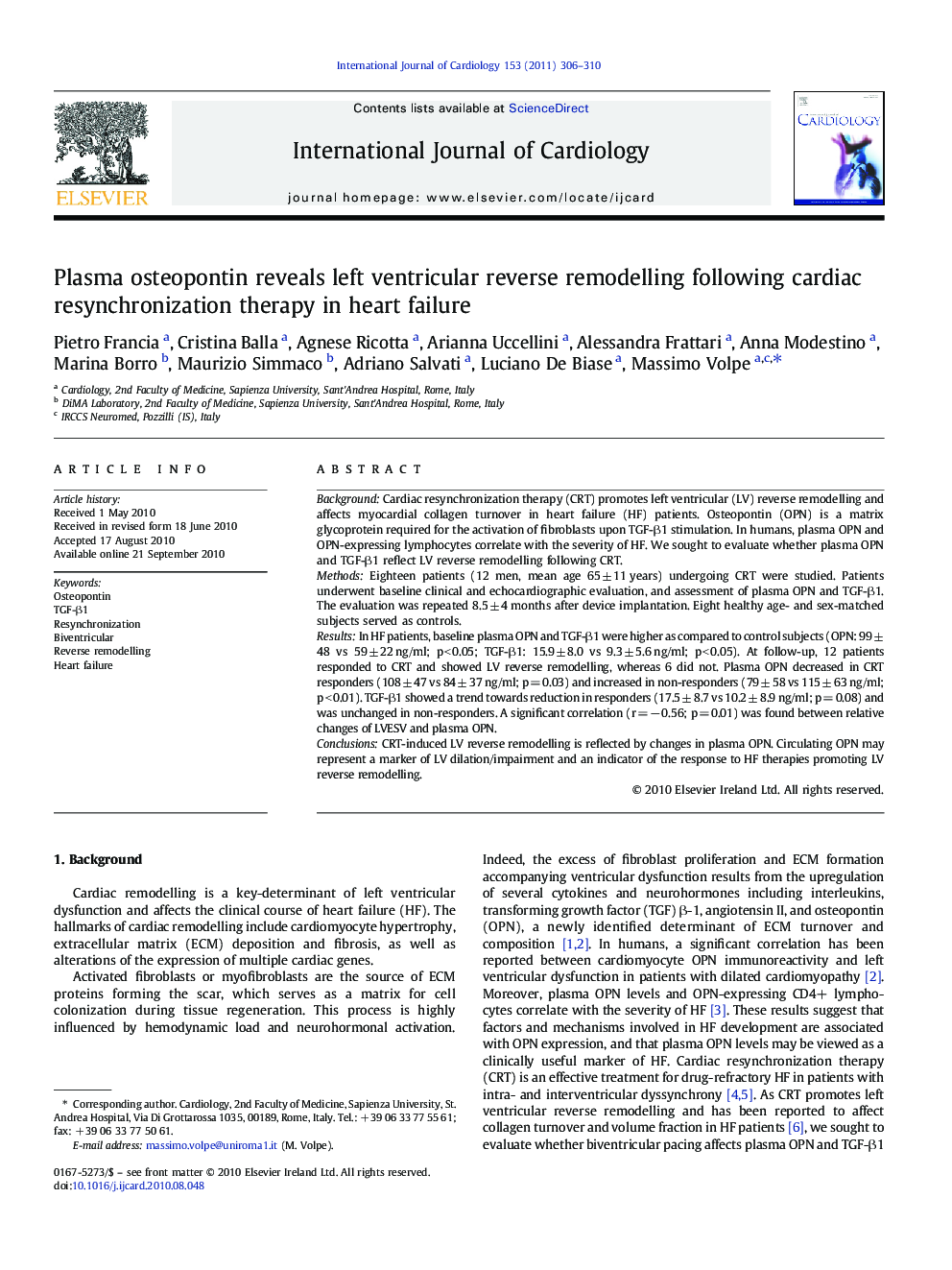| Article ID | Journal | Published Year | Pages | File Type |
|---|---|---|---|---|
| 2930426 | International Journal of Cardiology | 2011 | 5 Pages |
BackgroundCardiac resynchronization therapy (CRT) promotes left ventricular (LV) reverse remodelling and affects myocardial collagen turnover in heart failure (HF) patients. Osteopontin (OPN) is a matrix glycoprotein required for the activation of fibroblasts upon TGF-β1 stimulation. In humans, plasma OPN and OPN-expressing lymphocytes correlate with the severity of HF. We sought to evaluate whether plasma OPN and TGF-β1 reflect LV reverse remodelling following CRT.MethodsEighteen patients (12 men, mean age 65 ± 11 years) undergoing CRT were studied. Patients underwent baseline clinical and echocardiographic evaluation, and assessment of plasma OPN and TGF-β1. The evaluation was repeated 8.5 ± 4 months after device implantation. Eight healthy age- and sex-matched subjects served as controls.ResultsIn HF patients, baseline plasma OPN and TGF-β1 were higher as compared to control subjects (OPN: 99 ± 48 vs 59 ± 22 ng/ml; p < 0.05; TGF-β1: 15.9 ± 8.0 vs 9.3 ± 5.6 ng/ml; p < 0.05). At follow-up, 12 patients responded to CRT and showed LV reverse remodelling, whereas 6 did not. Plasma OPN decreased in CRT responders (108 ± 47 vs 84 ± 37 ng/ml; p = 0.03) and increased in non-responders (79 ± 58 vs 115 ± 63 ng/ml; p < 0.01). TGF-β1 showed a trend towards reduction in responders (17.5 ± 8.7 vs 10.2 ± 8.9 ng/ml; p = 0.08) and was unchanged in non-responders. A significant correlation (r = − 0.56; p = 0.01) was found between relative changes of LVESV and plasma OPN.ConclusionsCRT-induced LV reverse remodelling is reflected by changes in plasma OPN. Circulating OPN may represent a marker of LV dilation/impairment and an indicator of the response to HF therapies promoting LV reverse remodelling.
